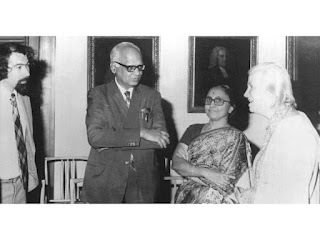Scientist Of Biology With His Discovery
(For the Reference - 11th NCERT Biology Book )
Ernst Mayr (1904 - 2004)
Born on 5 July 1904 , in Kempten , Germany , ERNST MAYR , the Harvard University evolutionary biologist who has been called The Darwin of the 20th century ' , was one of the 100 greatest scientists of all time . Mayr joined Harvard's Faculty of Arts and Sciences in 1953 and retired in 1975 , assuming the title Alexander Agassiz Professor of Zoology Emeritus . Throughout his nearly 80 - year career , his research spanned ornithology taxonomy , zoogeography , evolution , systematics , and the history and philosophy of biology . He almost single - handedly made the origin of species diversity the central question of evolutionary biology that it is today . He also pioneered the currently accepted definition of a biological species . Mayr was awarded the three prizes widely regarded as the triple crown of biology : the Balzan Prize in 1983 , the International Prize for Biology in 1994 , and the Crafoord Prize in 1999. Mayr died at the age of 100 in the year 2004 .
Katherine Esau (1898-1997)
KATHERINE ESAU was born in Ukraine in 1898. She studied agriculture in Russia and Germany and received her doctorate in 1931 in the United States. She reported in her early publications that the curly top virus spreads through a plant via the food conducting or phloem tissue. Dr Esau's Plant Anatomy published in 1954 took a dynamic, developmental approach designed to enhance one's understanding of plant structure and an enormous impact worldwide, literally bringing about a revival of the discipline. The Anatomy of Seed Plants by Katherine Esau was published in 1960. It was referred to as Webster's of plant biology - it is encyclopediac. In 1957 she was elected to the National Academy of Sciences, becoming the sixth woman to receive that honor. In addition to this prestigious award, she received the National Medal of Science from President George Bush in 1989. When Katherine Esau died in the year 1997, Peter Raven. The director of Anatomy and Morphology, Missouri Botanical Garden, remembered that she 'absolutely dominated the field of plant biology even at the age of 99.
G.N. Ramachandran (1922-2001)
G.N. RAMACHANDRAN, an outstanding figure in the field of protein structure, was the founder of the 'Madras school' of conformational analysis of biopolymers. His discovery of the triple helical structure of collagen published in Nature in 1954 and his analysis of the allowed conformations of proteins through the use of the 'Ramachandran plot' rank among the most outstanding contributions in structural biology. He was born on October 8. 1922, in a small town, not far from Cochin on the southwestern coast of India. His father was a professor of mathematics at a local college and thus had considerable influence in shaping Ramachandran's interest in mathematics. After completing his school years, Ramachandran graduated in 1942 as the top ranking student in the B.Sc. (Honors) Physics course of the University of Madras. He received a Ph.D. from Cambridge University in 1949. While at Cambridge, Ramachandran met Linus Pauling and was deeply influenced by his publications on models of the a - helix and ß - sheet structures that directed his attention to solving the structure of collagen. He passed away at the age of 78, on April 7, 2001.
Melvin Calvin
MELVIN CALVIN born in Minnesota in April, 1911, received his Ph.D. in Chemistry from the University of Minnesota. He served as Professor of Chemistry at the University of California Berkeley. Just after world war II, when the world was under shock after the Hiroshima - Nagasaki bombings, and seeing the ill effects of radio - activity, Calvin and co - workers put radio activity to beneficial use. He along with J.A. Bassham studied reactions in green plants forming sugar and other substances from raw materials like carbon dioxide, water and minerals labeling the carbon dioxide with C¹4. Calvin proposed that plants convert light energy to chemical energy by transferring electrons in an organized array of pigment molecules and other substances. The mapping of the pathway of carbon assimilation in photosynthesis earned him Nobel Prize in 1961 The principles of photosynthesis as established by Calvin are, at present, being used in studies on renewable resource for energy and materials and basic studies in solar energy research.
Alfonso Corti (1822-1888)
ALFONSO CORTI, Italian anatomist, was born in 1822. Corti began his scientific career studying the cardiovascular systems of reptiles. Later, he turned his attention to the mammalian auditory system. In 1851, he published a paper describing a structure located on the basilar membrane of the cochlea containing hair cells that convert sound vibrations into nerve impulses, the organ of Corti. He died in the year 1888.





Comments
Post a Comment